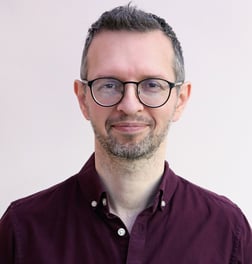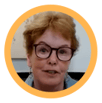Hi, I’m Mark, author of the Cell Suppression Theory of cancer. To be clear, I never intended to write a new theory. After being diagnosed with a rare sarcoma, I just wanted to understand the role of DNA mutations and lower my risk of recurrence. But when a close friend was later diagnosed, everything changed.
What began as personal research led to an unexpected discovery - and a troubling realization: our well-meaning clinicians are struggling to treat the disease effectively because the established theory on which conventional treatments are developed, is potentially incorrect - meaning, our clinicians may unwittingly be targeting the wrong feature of the disease.
With that said, the Cell Suppression Theory is the first to provide a plausible explanation for how natural compounds selectively kill cancer cells - and the first to account for all 10 cancer hallmarks rendering it the most accurate cancer theory currently available. This breakthrough could offer patients a deeper understanding of cancer and potentially lead to better treatment outcomes. The only way to effectively treat any disease, is to successfully identify it's origin.


Our multi-award-winning author
Though I’m don't have a formal medical education, my background in graphic design gave me the tools to think creatively and question many assumptions that appear to be hindering progress. In design, we’re trained to discard first ideas, embrace failure, and solve complex problems with fresh thinking. This mindset helped me break free from conventional constraints and explore new possibilities.
My journey - from curious outsider to award-winning author and speaker - shows that a creative, objective, evidence-based approach to problem solving can lead to groundbreaking insights. The beauty of my humble background meant that I was uniquely placed to translate my theory, and the science of cancer, in everyday language to make it accessible to all, because understanding cancer shouldn't be limited to scientists. Sometimes, seeing through a different lens makes all the difference.
While cancer is commonly presented as a genetic disease, recent scientific data suggests this view may be flawed - something every patient should know before choosing a treatment path.
Through my research, I discovered at least seven competing theories of cancer. None of which, including the widely accepted DNA theory, could fully explain all 10 of the Hanahan and Weinberg Hallmarks - the key benchmarks for assessing the validity/accuracy of any cancer theory. This means the true cause of cancer remains unknown. Since treatments are based on these unproven theories, it’s important to examine each one and its related therapies carefully. The more accurate the theory, the more effective its treatment is likely to be.
Recognizing these gaps, many are turning to complementary and alternative therapies. Some individuals, like Dr. Nasha Winters, Professor Ben Williams, and Jane McLelland, have survived terminal diagnoses using such approaches and have become pioneers progressing our understanding despite a confusing level of resistance from conventional scientists and clinicians. While I can partly understand this resistance - pre-clinical evidence is not sufficient, human clinical trials are needed - and while there appears to be abundant anecdotal evidence supporting alternative and complementary approaches, the exact mechanisms that underpin these success stories remains unclear - seeding doubt and skepticism. This uncertainty drove me to develop a theory that offers a clearer understanding that can directly benefit cancer patients by translating the science of cancer into simple understandable terms.


"Logic will get you from A to B. Imagination will take you everywhere."
Albert Einstein
"Sometimes it is the people no one imagines anything of, who do the things that no one can imagine."
Alan Turing
"I think this piece of work is going to be landmark in terms of how we understand and deal with cancer, it's up there with Jane McLelland's work and Professor Seyfried's Metabolic Theory."


Patricia Peat
Oncology nurse and CEO of Cancer Options

The evolution of Mark's revolutionary new theory
THEORY CREATION - August 2013 - October 2021
Mark Lintern finalises his groundbreaking theory - the first to fully explain all 10 recognised hallmarks of cancer; unifying existing theories, and addressing the gaps in our existing understanding.
THEORY VALIDATION - February 2023
Mark's theory is validated during the 'Cancer Through Another Lens' event where a panel of 10 international cancer experts were assembled to critique his work. This critique took the form of a six-hour webinar and was held in front of a live audience of just over 200 medical professionals, who voted overwhelmingly to acknowledge the significance of his theory.
THEORY PUBLICATION - May 2023
Mark publishes his theory within the book 'The Cancer Resolution?', acheiving a milestone by successfully translating the science of cancer into layman's terms.
LITERARY AWARD RECEIVED - November 2023
Providing recognition of Mark's accomplishments, his revolutionary work won a literary award for best non-fiction book in the 'health' category within the Best Indie Book Award competition. The award affirms that Mark has acheived his main objective - to provide cancer patients with revolutionary insight that is written in a manner accessible to all.
RADIO AWARD RECEIVED - May 2024
By public vote Mark's book wins the UK Health Radio annual award in the oncology category, after his book was nominated earlier in the year.
2nd LITERARY AWARD RECEIVED - October 2024
Mark's book wins the New York City BIG BOOK Award - a prestigious literary award that is open to both professionally published and self-published authors. Thus illuminating the significance, uniqueness and readability of Mark's profound work and its potential to benefit humanity.
Photo by Tadej Skofic on Unsplash

© Copyright Mark Lintern 2023. All rights reserved. Established: June 2023










